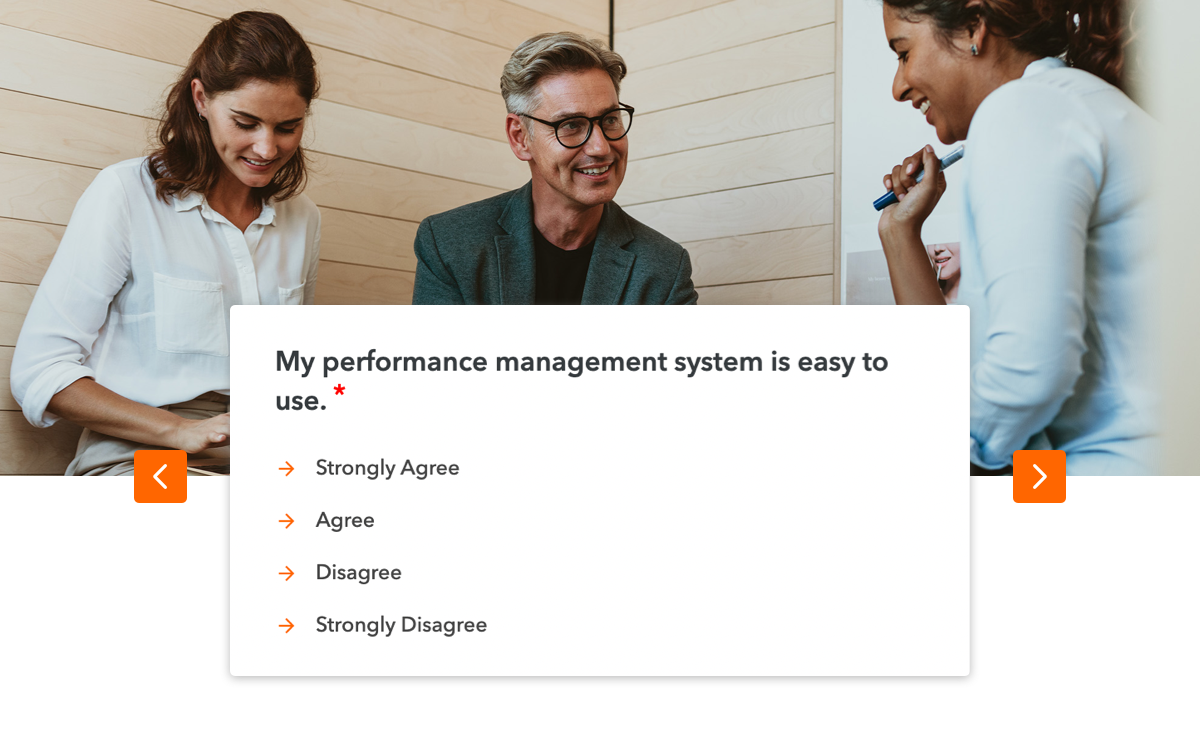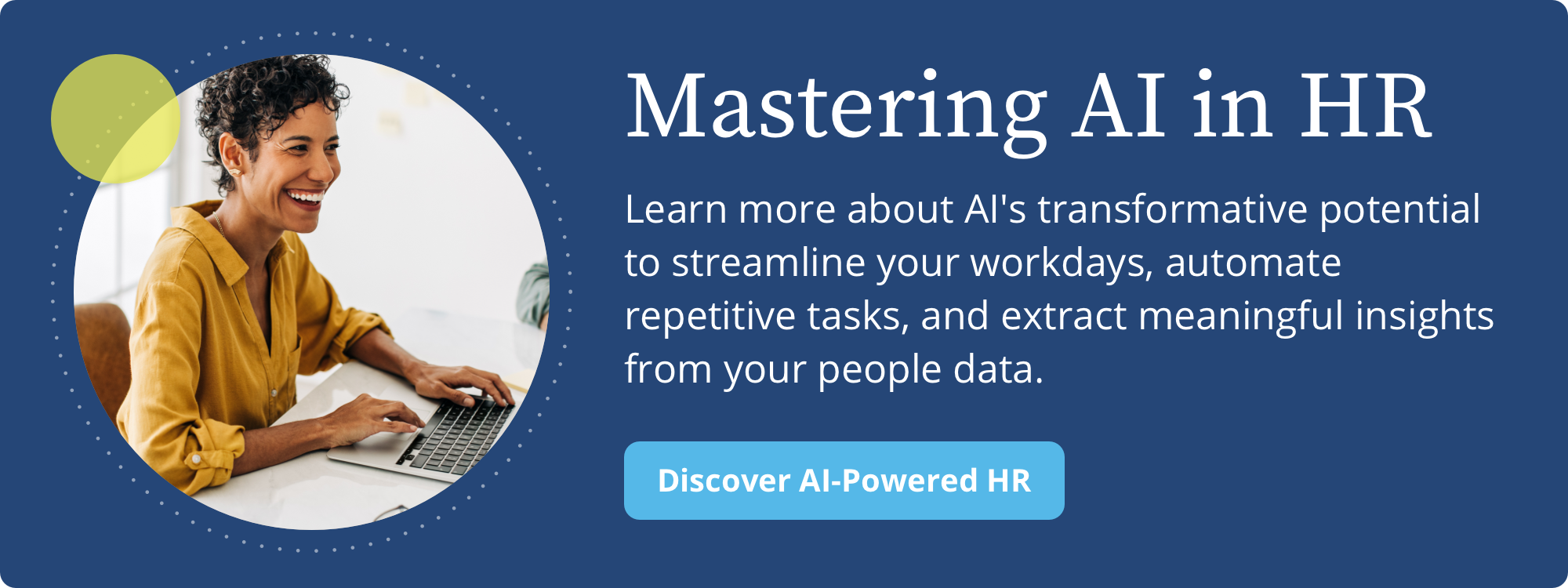Data-driven decision-making is not a new concept in business — but it hasn’t always been easy to apply it to human resources. It’s not always obvious which HR metrics are most important to track, not to mention which software option is the right analytics tool for your organization. From our desire to identify and track these metrics and use them to inform better HR outcomes, a new term has emerged: people analytics.
The knowledge people analytics provides enables your organization to make data-driven talent management decisions, improve HR processes, and maximize employees’ talent. It’s no wonder that more than 70% of companies are already gathering these analytics. But unfortunately, only 29% of employees say their company makes positive changes based on what they learn.
If your company is new to people analytics or gathering data that it could be using — but isn’t — you’re in the right place to learn more about what to do next.
70% of companies use #PeopleAnalytics, but just 29% make positive changes based on what they’re learning:Keep reading to dig into its definition, biggest benefits, examples, and why your company should invest in a comprehensive people analytics platform.
What is People Analytics?
People analytics is the process of collecting, analyzing, and learning from your company’s employee data and using it to make informed decisions about your people, processes, and organization to improve outcomes for your people and for the business as a whole. People analytics can help improve talent management processes and employee experience at every stage, culminating in a motivated, productive workforce and a successful business.
This data may also be referred to as HR analytics, talent analytics, or workforce analytics.
Types of analytics
There are four types of people analytics:
- Descriptive analytics describes what’s already happened, e.g. unusually high turnover in the sales department over the past four quarters. This type of analytics is the most common, used by 68% of organizations.
- Insightful or diagnostic analytics help explain why something happened — for example, they might reveal that the high turnover in sales correlated with falling engagement rates.
- Predictive analytics uses past data (along with algorithms and statistical modeling) to predict what could happen in the future. To stick with our example, predictive analytics might point to which sales team employees are at risk of quitting so management can take steps to prevent that or prepare for their departure.
- Prescriptive analytics takes predictive analytics up a notch. Prescriptive analytics makes recommendations about the next actions a business should take based on what’s most likely to happen next and why. Due to its complexity, only about 34% of companies are using this type of analytics.
Goals of using talent analytics
People analytics isn’t just about gathering data — and the analysis part isn’t even the most important. Using an analytic approach is all about what you do with the information you learn from the data. The ultimate goal of using talent analytics is to spot patterns in your workforce that allow you to better predict and respond to their future behavior. It allows companies to create workforce plans that their employees will respond to and have a real impact on employee turnover, performance, productivity, morale, and more.
Did you know that there are 4 types of people analytics? You might be using #DescriptiveAnalytics — but what about the other 3?Who handles people analytics?
Companies handle people analytics in a variety of ways depending on their industry, the number of employees, and the dynamics of their HR teams. Large companies may have a team or department that analyzes their people data, while smaller companies may have just one dedicated employee with data science skills or leverage the skills of their other HR employees.
How to track people analytics
No matter the size of their team, these HR professionals use people analytics software to assist their efforts. There’s no way around it — humans simply can’t compete with software when it comes to gathering, storing, and analyzing data. A people analytics solution can consolidate and analyze your data, and then generate reports based on what you want to learn from that data. With the right HR analytics tools, your team can glean actionable insights that help you make better business decisions and monitor their effect.
We’ll talk more about why your business needs workforce analytics software for this strategy, but first, let’s look at some benefits and use cases for the data.
Did you know? Companies that are analytics leaders are 5x more likely to be using specialized people analytics software.The Benefits of People Analytics
You may need to convince business leaders at your organization that investing in people analytics is worth it. Luckily, there are numerous benefits you can point to to make your case.
- People analytics removes the guesswork by drawing from companies’ real data, which means HR can employ data-backed strategies rather than relying on trial and error.
- It enables HR to operate as a strategic department with influence on an organizational level rather than just as an administrative function.
- It gives HR important insights that help them make better decisions about recruiting, hiring, engagement, and performance.
- It saves companies money by highlighting any inefficiencies in HR functions and spending and helping them reduce costs associated with hiring, turnover, and poor performance.
- It allows HR to find and close skills gaps. The team can identify skills that are needed at the company both now and in the future, and then address those gaps by hiring new employees, planning for future hires, or upskilling or reskilling current employees.
- People analytics reveals A-players, helping department leads spot which employees may be eligible for promotions or other growth opportunities.
- It helps HR ensure that compensation is fair and competitive to attract candidates and aid in retaining current employees.
- It highlights high and low employee engagement rates and potential causes so HR can address issues or emulate managers whose departments are highly engaged.
- It uncovers variances in productivity and helps HR find out what is driving high productivity or bringing it down.
- People analytics highlights performance trends and helps companies make predictions about future performance.
It’s clear that using people analytics effectively helps companies improve the employee experience while also helping HR departments operate more strategically and efficiently. And, this is not an exhaustive list of benefits — there are even more to discover when you begin using people analytics at your organization.
“People-centered leadership takes people analytics and uses them to better not only the organization’s strength and productivity but the employee experience as a whole.”
- Dr. Tyrone Smith, Jr., Director of People Analytics, Udemy
Use Cases for People Analytics
Dr. Tyrone Smith, Jr., director of people analytics at Udemy, says that companies “must understand the problem and clearly think through the potential solutions before jumping into the data.” That means before you start gathering and analyzing your people data, set goals for how you’ll use the data. Setting goals helps prepare your team for an influx of data by giving them concrete tasks and real scenarios to which it can be applied right away.
Kick off your new — or renewed — people analytics strategy by identifying questions you want to answer, problems your organization needs to solve, or processes that need refinement. In short, make a list of any areas of improvement where data can guide decision-making. Then, prioritize which of the areas are most important to address so you can hit the ground running when you begin analyzing your data.
These are some examples of how companies can use people analytics:
- Identify common traits of high performers to increase quality-of-hire and hire the best person for every role
- Speed up hiring processes by identifying qualified candidates more quickly
- Prevent productivity slumps by forecasting turnover more accurately
- Achieve a goal of reaching racial and/or gender parity in leadership positions within the next five years
- Determine the ideal length of onboarding programs for various roles
- Optimize employee learning by identifying the most effective training programs
Why You Need People Analytics Software
Even if you’re already collecting people and HR data, it can be difficult to collect because it’s often siloed, available in various software programs but not compiled in one place — and 49% of companies find it to very difficult to integrate that data. Even if it is, 38% of companies find data visualization to be challenging.
Great HR analytics software can prevent this, uniting your people data in one place, producing easy-to-read reports, and making thorough, accurate analysis possible. As you collect more and more data, your people analytics solution will get better and better at helping you identify issues and what might be causing them. Sophisticated analytics tools can even forecast potential results and offer solutions.
The best analytics software solutions give you and your team access to in-context analytics, which are visual data analysis tools that are available in various dashboards and workflows. You can see graphs, charts, and other visualizations wherever you’re working in the software instead of navigating to a standalone dashboard or generating a new report.
Break down data silos, analyze that people data accurately, and leverage it to improve HR functions and build a better work environment with ClearCompany. Our full-spectrum Talent Management Platform combines data from recruiting and onboarding tools, performance reviews, employee surveys, and more to build custom reports and dashboards that provide impactful workforce insights.
Get a demo of ClearCompany’s Talent Management System and experience how our Reporting & Analytics capabilities can transform your HR strategy. Sign up today to speak with a ClearCompany expert.



